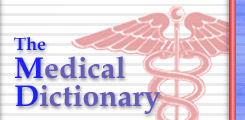hospital nursing
He's depending on the machine-and you. Make sure you can troubleshoot problems and prevent complications by reading this guide.
Aaron Black, 67, was admitted to your unit last night with respiratory distress. This morning, the alarm on his bilevel positive airway pressure (BiPAP) machine sounds as you're taking shift report. Can you respond with confidence?
In this article, I'll explore the types of mechanical (assisted) ventilation, present some practical techniques for dealing with the patient and the machine, and spell out how you can help prevent complications.
Two basic types
Mechanical ventilation delivers oxygen via invasive and noninvasive techniques to support respiration in patients who can't breathe on their own.
Invasive ventilation is administered through a tracheostomy or endotracheal tube, typically when the patient has severe respiratory distress or failure. He may not be able to maintain his own airway, or he may be receiving heavy sedation that leads to airway compromise.
Noninvasive ventilation is administered shortterm through an occlusive mask that fits tightly over the nose or the nose and mouth. The patient must be cooperative and able to manage his own airway and secretions. Noninvasive methods include BiPAP and continuous positive airway pressure (CPAP). Vomiting and aspiration are risks of therapy, but weaning is typically easier than with the invasive method.
Now let's consider how mechanical ventilation compares with spontaneous ventilation.
Negative or positive pressure
During normal spontaneous inspiration, negative pressure in the thorax expands the lungs to pull air in. This helps evenly distribute air throughout the lungs and maintain normal lung ventilation.
Mechanical ventilation uses positive pressure to blow air in, so pressure in the thorax changes to positive. More air reaches the airways but less fills the alveoli, so the patient is more susceptible to atelectasis and impaired gas exchange in the lower lobes. Positive pressure in the mediastinum can impair cardiac output and hemodynamic status.
Ventilator settings control the amount and pressure of air delivered to the lungs. The amount, tidal volume (VT), is based on the patients ideal weight. The pressure is preset to a maximum for VT delivery. If lung elasticity changes, the machine adapts the pressure to achieve the set VT. Each delivered breath ends at a certain measured volume or pressure. (See A Few Familiar Terms for definitions.)
Because negative pressure isn't available to hold the alveoli open during mechanical ventilation, maintaining a constant positive pressure helps prevent premature closing. Positive end-expiratory pressure (PEEP) achieves this in a mechanically ventilated patient, and CPAP is used if the patient is breathing spontaneously.
The greater the amount of PEEP or CPAP, the more air is held in the alveoli. Larger amounts increase functional residual capacity but also predispose the lungs to injury and affect hemodynamics. So in some cases the PEEP or CPAP setting is increased to protect the lungs if VT is decreased.
Assessing patient and ventilator
Help Mr. Black avoid complications related to BiPAP by performing accurate and frequent assessments. Begin with the ABCs, plus "D" for disability, and always check the patient before the machine.
A. The airway of a mechanically ventilated patient includes the endotracheal tube, tracheostomy or mask, ventilator, and tubing. Frequently assess the mask and tube for leaks and the ventilator tubing for kinks and blockage.
B. Assess both patient and ventilator for adequate breathing. Check your patient's respiratory rate and work of breathing and the ventilator rate, volume, and pressures. If the ventilator rate and his respiratory rate differ, the ventilator may be disconnected or he may be taking spontaneous breaths. If his respiratory rate is greater than 20, assess him for respiratory distress.
Listen to your patients lungs, beginning at the bases in back where perfusion is best and most gas exchange occurs. If breath sounds are diminished or you hear crackles, he's probably developing atelectasis.
Gauge his work of breathing by assessing his vital signs, especially respiratory rate, and his respiratory effort (including use of accessory muscles). Increases in blood pressure (BP), heart rate, and respiratory rate may signal increased work of breathing, so you need to determine whether his condition has worsened or the ventilator is malfunctioning.
C. Circulatory effects of positive pressure in the mediastinum include changes in cardiac output and venous return to the heart. In a patient with cardiovascular disease, these changes can profoundly affect BP and cause pulmonary edema.
D. Long-term disability due to inflammation, infection, or barotrauma is a risk of mechanical ventilation, so preventing complications is critical.
Managing complications
Complications of mechanical ventilation vary greatly. To help prevent the following complications, provide good pulmonary hygiene and follow this golden rule: Use the least amount of support necessary to maintain acceptable oxygen saturation. For example, full ventilator assistance is inappropriate if the patient is taking spontaneous breaths.
Atelectasis, or collapsed alveoli, is common and can lead to hypoxemia and infection. Setting the ventilator to administer deep breaths or sighs helps prevent this complication. Frequently change your patients position, suction as needed to remove secretions, and thoroughly assess his breath sounds at least every 4 hours.
Suctioning can cause hypoxia and increases the risk of infection and barotrauma. To safeguard the process, hyperoxygenate your patient beforehand, adjust the pressure on the suction source to between 80 and 120 mm Hg, and make brief passes. Avoid hyperventilation, which increases the risk of barotrauma. Don't routinely use lavage with 0.9%, sodium chloride before suctioning unless secretions are thick or you suspect mucus plugging.
Infection is a risk of forcing air into the lungs, bypassing the first line of defense in the oral and nasal pharynx. Endotracheal tubes, a tracheostomy nasogastric tubes, and poor oral hygiene can add to the risk. Provide good oral and pulmonary hygiene and keep the ventilatory circuits clean.
Barotrauma, damage to the lungs due to excessive pressure or volume, can lead to pneumothorax. Patients with chronic lung disease or decreased lung elasticity, as in acute respiratory distress syndrome, are especially vulnerable. Changes in lung sounds or your patient's clinical status or evidence of pneumothorax on chest X-ray may signal barotrauma. He may need a chest tube and drainage device and possibly a different ventilation mode. To prevent barotrauma, avoid situations that increase pressure or volume, such as airway obstruction and air trapping.
Oxygen toxicity affects adults when oxygen concentrations exceed 50% for 16 hours or longer. Delivering high levels to diseased lungs causes oxygen to convert to oxygen free radicals that destroy healthy tissue and cause further damage. Increased respiratory distress and worsened hypoxemia may indicate oxygen toxicity. The patient needs prompt weaning and monitoring to prevent further complications. The golden rule is the best prevention.
Weaning problems can occur if your patient becomes dependent on mechanical ventilation. During weaning attempts, his respiratory rate, BP, and heart rate may rise and his oxygen saturation may fall, causing hypoxemia and difficulty with weaning. Following the golden rule is the best way to prevent dependence and weaning problems.
The key to preventing complications related to mechanical ventilation is to provide your patient with enough support to get him past his acute illness. High levels won't help speed his recovery but could trigger complications.
Assess; prevent, and support
Mechanical ventilation can be a lifesaving therapy, but it does carry risks. By providing Mr. Black with careful assessments, aggressive pulmonary hygiene, and minimal ventilator support that meets his needs, you'll help him recover from his illness without complications of mechanical ventilation.
SELECTED REFERENCES
Ackerman, M., and Mick, D.: "Instillation of Normal Saline before Suctioning in Patients with Pulmonary Infections: A Prospective Randomized Controlled Trial," American Journal of Critical Care. 7(4):261-266, July 1998. Criner, C.: "Care of the Patient Requiring Invasive Mechanical Ventilation," Respiratory Care Clinics of North America. 8(4):575-592, December 2002. Hess, D.: "Mechanical Ventilation Strategies: What's New and What's Worth Keeping?" Respiratory Care. 47(9):1007-1017, September 2002.
David W. Woodruff is the president of E&Nurses, Inc., in Sagamore Hills, Ohio.
SELECTED WEB SITES
American Association of Chest Physicians: Evidence-Based Practice
Guidelines: http://www chestnet.cemet.org@guidelines/
VentWorld www.ventworld.com
The ABG Site www.the-abg-site.com
Last accessed on June 4, 2003.
BY DAVID W WOODRUFF RN, CCRN, CNS, MSN
Copyright Springhouse Corporation Jul 2003
Provided by ProQuest Information and Learning Company. All rights Reserved


